Design Museum Collection App:driving movies
The Design Museum in London launches its Design Museum Collection iPad app today that features 59 objects from their collection, including interviews with museum director Deyan Sudjic filmed by Dezeen. Download it free from the app store here.
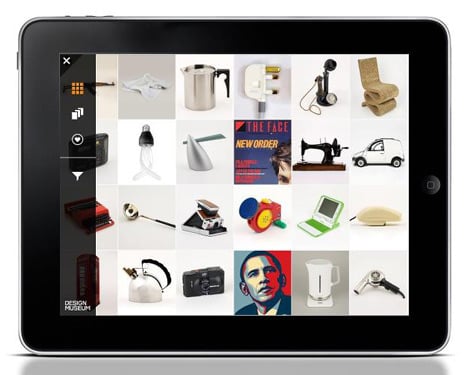
In this first movie in a series taken from the app, we've compiled entries about classic design for driving. Pieces discussed include the Vespa Clubman scooter, British traffic lights, Mobil Oil petrol pump and a model car built from a sketch by Le Corbusier. You can also watch this movie on Dezeen Screen »
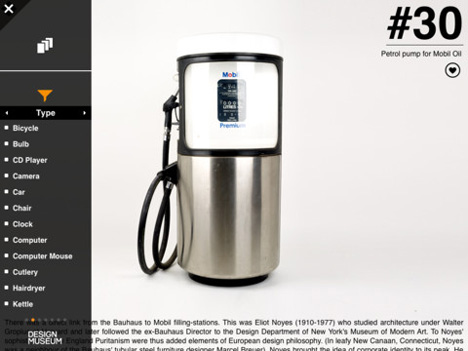
iPhone and Android versions will be launched in the next few months.
Download the Design Museum Collection App here.
Here are some more details about the app from the Design Museum, followed by text excerpts from the app:
Design Museum launches Collection App
The Design Museum launches its first iPad Collection App featuring 59 objects from the Design Museum’s collection. The App is a free download which explores key moments in design history through the extensive Design Museum Collection. Classic pieces featured include: the Angelpoise lamp, the Dyson vacuum, the Thonet chair mould, the Face magazine, the British telephone box, the Vespa and the Kindle, a recent addition to the Collection.
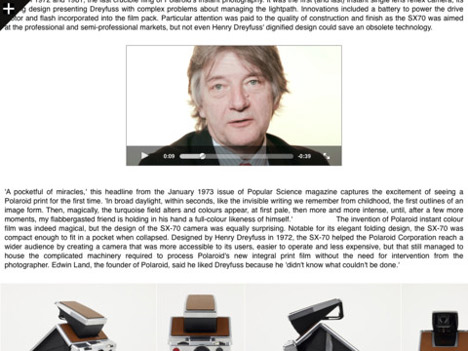
The App includes video interviews with Deyan Sudjic, Design Museum director, and Helen Charmen, Design Museum head of learning. Stephen Bayley, Design Museum founding director, has contributed additional commentary. The App enables users to explore each design by material, date, manufacturer, designer and colour.
The Design Museum has showcased and celebrated design innovation for 22 years and this App, supported in part by donations from visitors, is a new way to explore the museum’s collection. With a global digital audience in excess of three million visitors a year including over 500,000 Twitter followers and 150,000 Facebook fans, the museum is offering new ways to engage its global audience with design.
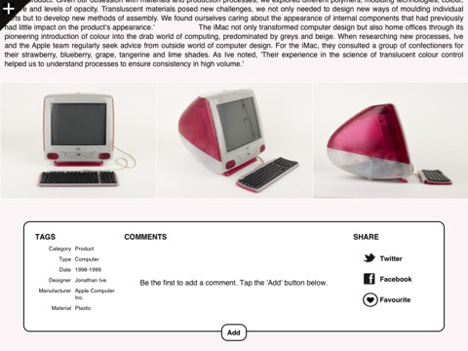
The Design Museum is building its collection ahead of its move to new premises at the former Commonwealth Institute in west London in 2014. The App will develop in line with the collection and build to become a unique design resource.
iPad launch date: 28 March 2012
iPhone launch date: 3 May 2012
Android launch date: 5 June 2012
The Design Museum would like to thank the developers twentysix, film makers Dezeen and Alice Masters, author Stephen Bayley and all those who made contributions to the app. The Design Museum would also like to thank the Heritage Lottery Fund for their initial support.
Commissioned by the Design Museum
Development by twentysix
Films by Dezeen
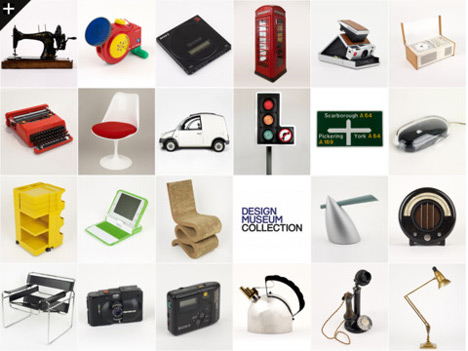
The Design Museum Collection
The Design Museum Collection is made up by over 2000 objects that range from the early Modernism of the 1900s to the cutting edge of contemporary design. The Collection tells the history of design in mass production and includes furniture, lighting, domestic appliances and communications technology. The Collection is an important record of the key designs which have shaped the modern world.
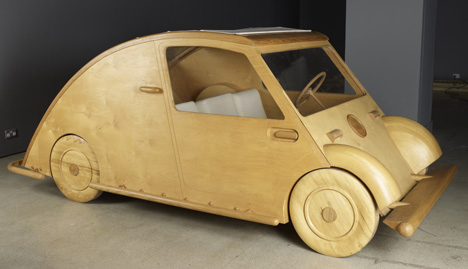
Model of the Voiture Minimum
It is hardly surprising that Le Corbusier, the architect who conceived of houses as ‘machines for living in’, should attempt to design a car. The Swiss architect was famously obsessed with the potential of technology to transform everyday life. To him, and many progressive thinkers of the time, the automobile was a symbol of modernity and a focal point in his visions for futuristic utopias. The car was designed in response to a competition by France’s Société des Ingénieurs de l’Automobile (SIA), which called for proposals for a small, practical and economical car that cost no more than 8,000 francs. Le Corbusier answered the challenge with his cousin, and business partner, Pierre Jeanneret, and in 1936 they submitted proposals for the Voiture Minimum. Sadly, the car never actually made it into production, nonetheless, its striking form had a lasting impact. As Italian car designer Giorgetto Giugiaro wrote in 1987, the Voiture Minimum ‘is so full of inventive touches that even nowadays they are among the most advanced proposals’, pointing out that it was ‘following the principles of aerodynamics that were sensed long before prototypes were placed in wind tunnels.’
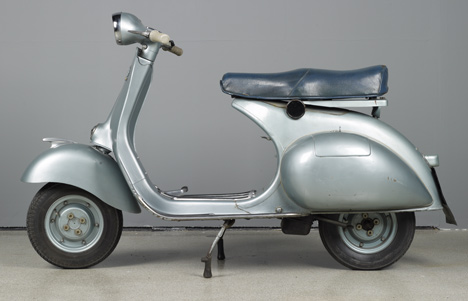
Vespa Clubman
Launched at the Rome Golf Club in 1946, the Vespa was the birthchild of Enrico Piaggio. After the Second World War, a time when most Italians lacked modes of transport or the means to acquire them, the aeroplane manufacturer hit upon the idea of developing a scooter to kick-start Italy’s economic reconstruction. He approached the aeronautical engineer Corradino D’Ascanio to design a new motorcycle. D’Ascanio famously did not like motorcycles, finding them uncomfortable and bulky, dirty and difficult to maintain. Drawing on his experience in aeronautical engineering, D’Ascanio completely re-designed the scooter. The riding position of the Vespa was designed to let you sit comfortably and safely, rather than perched dangerously on top. The front body protected the rider from getting dirty and the wheels are supported by arms similar to those found on aircraft carriages to make changing tyres easier.
Just four years after its debut, companies across Europe clamoured for the right to build the motorcycle. In the UK, a licence was granted to Douglas of Bristol, who marketed the Vespa with the name ‘Clubman’. By the 1960s, the Vespa Clubman had become the scooter of choice for the fashion-conscious mods, who liked its stylish Italian associations and its potential for modification. They would add lights, accessories, various racks, mascots and crash bars, and attended scooter rallies across the country. A cultural icon both in Italy and in the UK, the Vespa scooter was one of the great transport phenomena of the twentieth century.
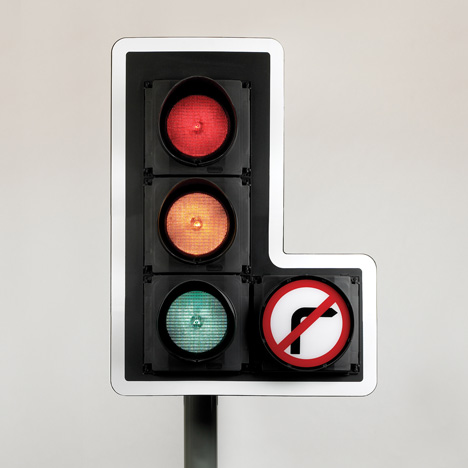
Traffic light
During the 1960s, thousands of miles of new roads and motorways were built in Britain. Following the introduction of the new signage system by Jock Kinneir and Margaret Calvert, the Ministry of Transport approached David Mellor to design a new traffic control system. Over 4,500 sets were to be gradually replaced by a new version, which used a new light which was brighter during the day and softer at night. Mellor’s main concern was to simplify a system that had been cluttered up with various additions over the years, developing a new system which was adaptable to include additional signs such as ‘no left turn’ and traffic filter arrows when required. It was of prime importance that the message should come across with total clarity. The new signals were made from polypropylene plastic, which needed no repainting. Mellor’s traffic lights are still in use today.
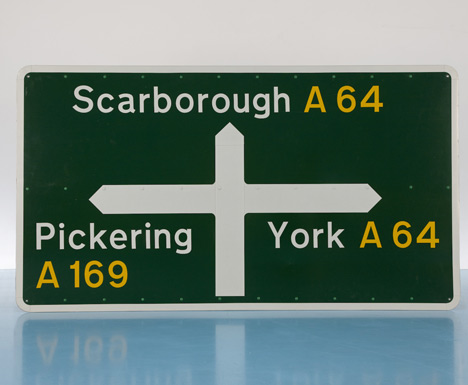
Road sign (Scarborough, York, Pickering, A64, A169)
Britain’s first motorway, the Preston By-pass, was an endeavour to alleviate congestion on the roads by increasing both capacity and the speed that cars could travel. In response to this, a government advisory committee was established in 1957 to investigate the effectiveness of current signage and align it with continental practices.
Graphic designer Jock Kinneir and his assistant Margaret Calvert were then asked to research the requirements of a new signage system. After introducing successful signs to the new M1 motorway, Kinneir and Calvert redesigned and unified the entire road sign system. Although modified over the years to include extra information, such as junction numbers and speed cameras, the purity of their original system remains and is integral to the identity of British roads.
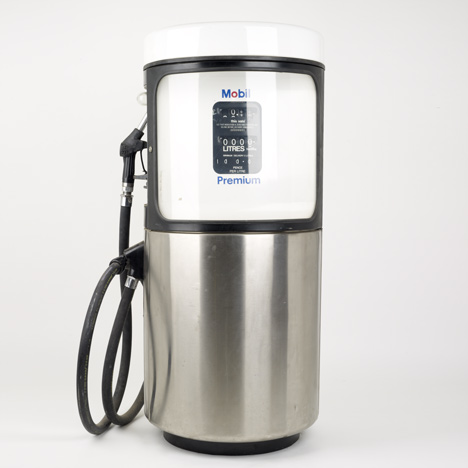
Petrol pump for Mobil Oil
One of the most recognisable petroleum brands in the world, the Mobil logo has remained more or less the same since it was designed in 1964 by Tom Geismar of Chermayeff & Geismar. Commissioned by architect Eliot Noyes to develop a strong and coherent graphic identity for the new company, Geismar’s initial concern was that their name would be mispronounced as ‘Mo-bile’, rather than ‘Mo-bil’. His solution was to stress, visually, the letter ‘o’. By reproducing the letter in red, it is distinguished from the rest of the name and suggests the correct pronunciation. This also added a very memorable and distinctive element to an otherwise straightforward identity.
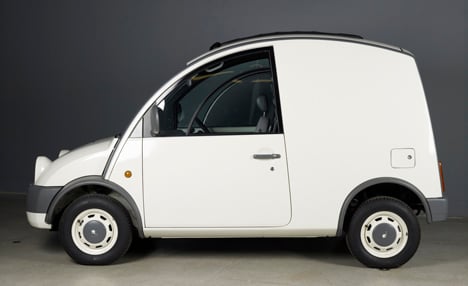
S-Cargo
Launched at the Tokyo Motor Show in 1989, the tall curved roof and circular rear windows of the Nissan S-Cargo attracted a great deal of attention. The commercial van’s name is a affectionate play on words meaning both ‘Small Cargo’ and ‘Escargot’, the French word for snail. Despite the whimsical name, the snail-like appearance of the S-Cargo belies serious design considerations. Large side doors make it simple for the driver and passenger to get in and out, while a top hinged rear door with a low payload floor allow for easy loading and unloading of large items, made simple by the tall roof and foldaway rear seat. Clear, easy-to-read gauges and a generous windscreen were developed with the driver in mind and a flat dashboard makes an ideal desk away from the office.
Although the van won widespread appeal for its appearance and versatility, it was only ever intended to be a limited edition production. Built by Nissan’s special projects group The Pike Factory (also responsible for cars such as the iconic Figaro and the Pao), a total of 12,000 vans were made between 1989 and 1992.
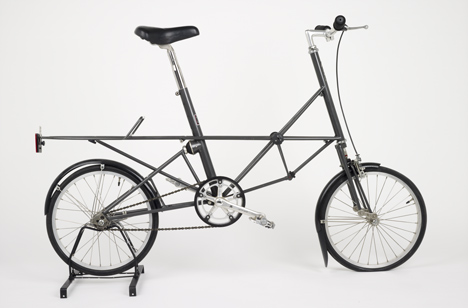
Moulton AM2
James Dyson, industrial designer and founder of Dyson describes the 1983 bike’s success as follows: ‘Designed by west of England designer, Alex Moulton, this bike is extraordinarily engineered. It has very small wheels, but is able to tear along at the speed of a racing bike. Small wheels grip the road surface, and good suspension gives the robust frame comfort.’